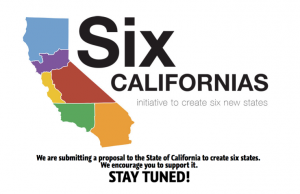Low turnout in 2014, high initiative count in 2016
by James Poulos | December 16, 2014 11:29 am
 Elections have consequences. Ironically, California’s abysmal election turnout this November has teed up a veritable flood of ballot initiatives for 2016. Because the signature threshold for qualifying initiatives is pegged to the number of Californians who cast votes in the previous election, activists with a losing track record are angling for a breakout opportunity just around the political bend.
Elections have consequences. Ironically, California’s abysmal election turnout this November has teed up a veritable flood of ballot initiatives for 2016. Because the signature threshold for qualifying initiatives is pegged to the number of Californians who cast votes in the previous election, activists with a losing track record are angling for a breakout opportunity just around the political bend.
Only a third of those eligible to cast ballots did so on Nov. 4. “Of those who registered to vote, little better than four in every 10 – about 42 percent – actually voted, either in person or by mail,” according[1] to the California Secretary of State. Even more important, the total votes cast for governor, which determines the numerical hurdle signature-gatherers must clear to get their initiative on the ballot, hit a quarter-century low. The San Francisco Chronicle reported[2]:
“In California, the number of signatures required to qualify a measure for the ballot is a percentage of the total votes cast for governor. Since the 42 percent turnout on Nov. 4 meant only about 7.3 million people bothered to take a side in Gov. Jerry Brown’s landslide win over Republican Neel Kashkari, the bar for qualifying ballot measures in 2016 will be at the lowest level in at least 25 years.
“The change isn’t a tiny one. Since the last governor’s election in 2010, it has taken 504,760 valid signatures to put a standard initiative on the ballot and 807,615 signatures for a constitutional amendment. Once the November election is certified Friday, those numbers will drop to about 366,000 and 586,000, respectively.”
A host of initiative hopefuls has already begun to plan for a big 2016, including public employee unions and taxpayers rights’ groups. But attention will focus most strongly around two high-profile efforts that have failed in the past, but enjoy the support of powerful backers: marijuana legalization and the breakup of California into six smaller states.
Hemp hopes
As Reason magazine observed[3], advocates of marijuana legalization and regulation have picked up steam in recent years, thanks to voter support. Alaska, Colorado, Oregon, Washington and the District of Columbia all have given pot the green light; emboldened, activists have turned for 2016 to Maine and Massachusetts in the East and Montana, Arizona and California — the biggest prize — in the West.
Along with proposals to fly the California flag at the same height as the U.S. flag, and to require the use of condoms in pornographic video performances, the marijuana legalization initiative has already been publicly proposed[4], but not yet made official with the Attorney General’s office.
Pot advocates hope to use 2016’s low bar to land on the ballot in a well-publicized but cost-effective way. In 2010, voters rejected a legalization initiative; this year, advocates see themselves catching a nationwide wave in favor of looser drug laws — and capitalizing on recent changes to California criminal law that treat inmates convicted on drug charges more leniently.
Six Californias 2.0
Venture capitalist Tim Draper, meanwhile, hasn’t given up his own hopes for an up or down vote on his Six Californias proposal. That idea, ridiculed in many corners of the press but viewed favorably by those seeking to shake up dysfunctional state governance, didn’t make it onto the ballot last time around. It would break up the state into six new states.
“Draper put about $5 million of his own money into gathering some 1.13 million signatures for ‘Six Californians,’ only to have the California Secretary of State’s office rule that just 752,000 were valid,” the Chronicle reported[5]. “That was not enough to make the 807,000 required this year to make the cut.” In an interview with the Chronicle, Draper chose his words carefully:
“’We’re going for 2016, and we have 750,000 signatures, but they say we have to start all over again,’ he said Tuesday. ‘It’s a kind of Catch 22.’
“Asked if he will re-launch the signature-gathering process in light of the new 2016 lower bar, Draper said, ‘We want Six Californias to happen. We’ll see.’
“’This is a mission critical for the state,’ he said. ‘I live here and so does most of my family,’ and more than ever, he said, ‘we’re saying wait a second: we can make this change.’”
That’s an attitude typical of those who struggle to land initiatives on the statewide ballot. For them all, 2016 offers a once-in-a-generation chance to do so.
- according: http://calwatchdog.com/2014/12/15/dismal-election-turnout/
- reported: http://www.sfgate.com/politics/article/2016-election-s-ballot-measure-bar-lowest-in-25-5951638.php
- observed: http://reason.com/blog/2014/12/09/nevada-measure-is-first-marijuana-legali
- proposed: http://ballotpedia.org/California_2016_ballot_propositions
- reported: http://blog.sfgate.com/nov05election/2014/12/09/vc-tim-draper-not-giving-up-on-six-californias-but-first-a-reality-show/
Source URL: https://calwatchdog.com/2014/12/16/low-turnout-2014-high-initiative-count-in-2016/